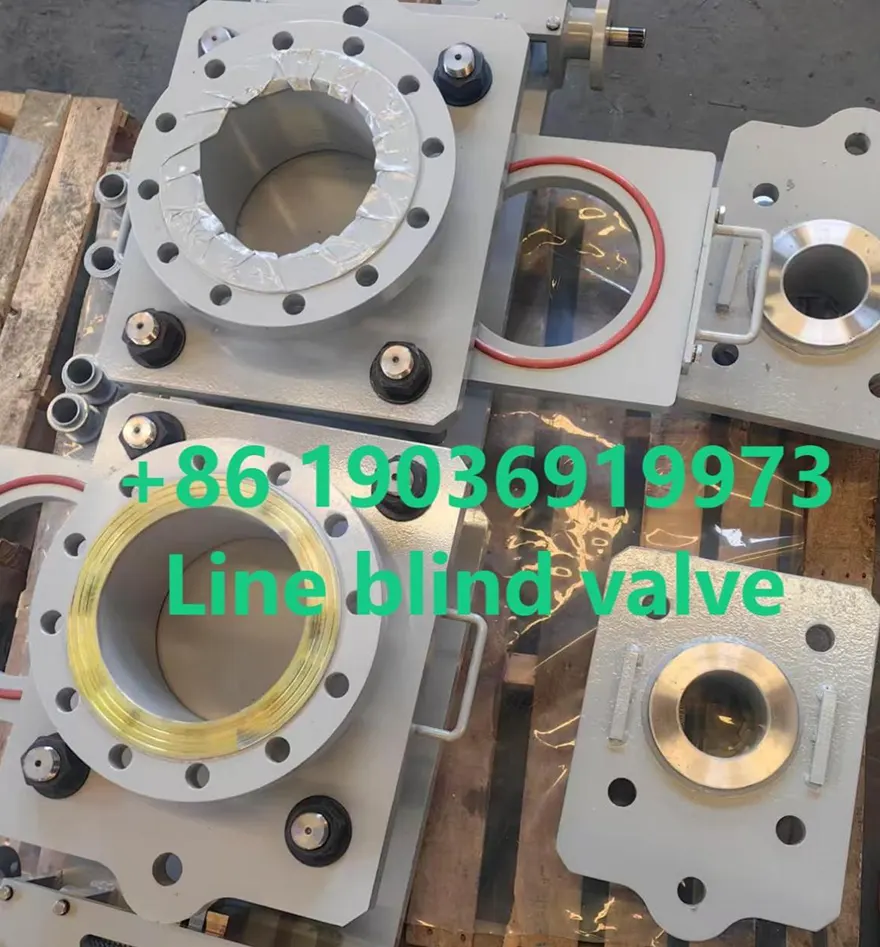I. Characteristics of blast furnace gas and challenges in valve selection
When the blast furnace gas is discharged from the top of the furnace, the temperature can reach 150–300 °C, the dust content is as high as 10–100g/Nm³, and it also contains CO, H₂S and other corrosive components. Conventional valves are highly susceptible to wear, corrosion, or seizure in this environment, so the selection must meet the following requirements:
Abrasion resistance: The dust content of crude gas is large, and the sealing surface of the valve needs to be cemented carbide or special coating. Corrosion resistance: H₂S and moisture can easily cause valve corrosion, so stainless steel, nickel-based alloys or special coatings need to be used. High temperature adaptability: When it exceeds 200°C, ordinary rubber seals are easy to age, and metal seals or water-cooled structures are required. Quick shut-off capability: In case of an emergency, the valve must be closed within seconds to prevent gas leakage.
II. Mainstream valve types and applicable scenarios

(1)Blind Valve (Spectacle Valve) – First choice for safe isolation Applicable scenarios: long-term cut-off or maintenance isolation, such as gas cabinet inlet and TRT system bypass. Selection points: The large bore (DN≥800) is recommended with hydraulic or electric drive to ensure fast switching. The sealing material needs to be resistant to high temperatures, such as fluoroelastomer metal skeleton composite seal. Industry case: A steel mill installed an electric blind valve at the outlet of the gravity dust collector, and the maintenance efficiency was increased by 40%. The blind valve produced by zzjg industrial valve factory has a complete range and wide coverage, which can manufacture low-pressure fully enclosed glass valves with a diameter of up to DN3200, and can also manufacture blind valves with a pressure of up to 2500LB, which can meet the use of on-site working conditions.

(2)Triple eccentric metal sealed butterfly valve – the “guardian” of high-dust pipelines Applicable scenarios: main pipeline flow regulation or cut-off, such as blast furnace gas transmission pipelines. Selection points: Seat overlay Stellite alloy for improved wear resistance. The stem is water-cooled to prevent deformation at high temperatures. User feedback: After a company uses it, the life of the valve has been extended from 3 years to 8 years.
(3)All-welded ball valve – a high-pressure solution with zero leakage Applicable scenarios: TRT power generation system, high-pressure clean gas pipeline. Selection points: The valve body is welded as a whole to eliminate the risk of external leakage. It is suitable for pipes with PN25 and above pressure, DN≤300. Expert tip: Installing an all-welded ball valve at the TRT outlet reduces maintenance by up to 80%.

(4)Knife Gate Valve – “Scavenger” for High Dust Content Applicable scenarios: dust collector inlet, pipe section with high dust concentration. Selection points: The disc is made of NM400 wear-resistant steel with a self-cleaning blade design. Pneumatic actuators require explosion-proof certification (e.g. ATEX). Application case: After the use of a coking plant, the problem of valve jamming was reduced by 90%.

III. Coping strategies for special working conditions
High temperature section (>300°C) It is equipped with a ceramic lined valve or a water-cooled bonnet construction. Case: A steel mill uses a water-cooled butterfly valve in the gas pipeline of a hot blast furnace, which has been running for 5 years without failure. Corrosive environments Trim is made of Hastelloy C276 or nickel-plated carbon steel. Case: A coastal steel mill uses nickel-plated ball valves, which increase the corrosion resistance life by 3 times. Urgently cut off the demand SIL3 certified hydraulic plug valve with a response time of < 3 seconds.
IV. Maintenance and life management
Regular inspection: check the wear of the sealing surface every 3 months, and fill the valve stem with high-temperature grease. Cleaning measures: The knife gate valve needs to be cleaned regularly to prevent jamming. Life prediction: high-quality wear-resistant valves can be used for more than 10 years, and ordinary valves can be used for about 5 to 8 years.
V. The voice of the industry
Prof. Wang (Metallurgical Safety Expert): “The explosion-proof and quick shut-off capability of the valve is directly related to the safety of production and must comply with international standards (e.g. API 6D, ISO 15848).”
Epilogue
The selection and maintenance of blast furnace gas valves is a systematic project, which needs to be combined with the characteristics of the medium, working conditions and safety standards. With the development of new materials and intelligent control technology, the reliability of valves will be further improved in the future, providing a stronger guarantee for the safe and efficient production of the steel industry.
DO YOU HAVE QUESTIONS? WE ARE HERE TO HELP YOU!